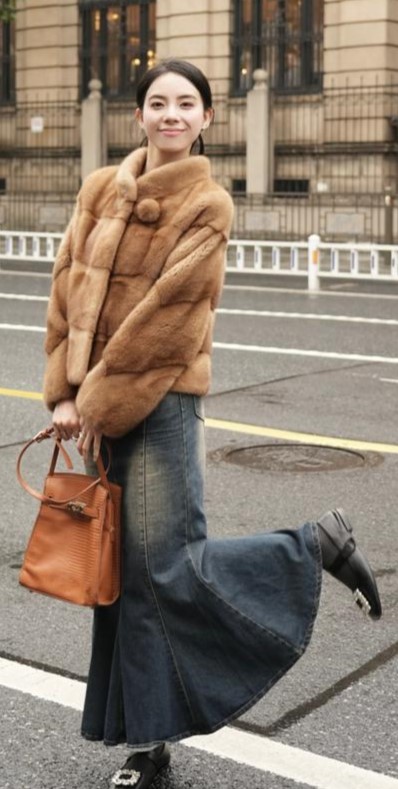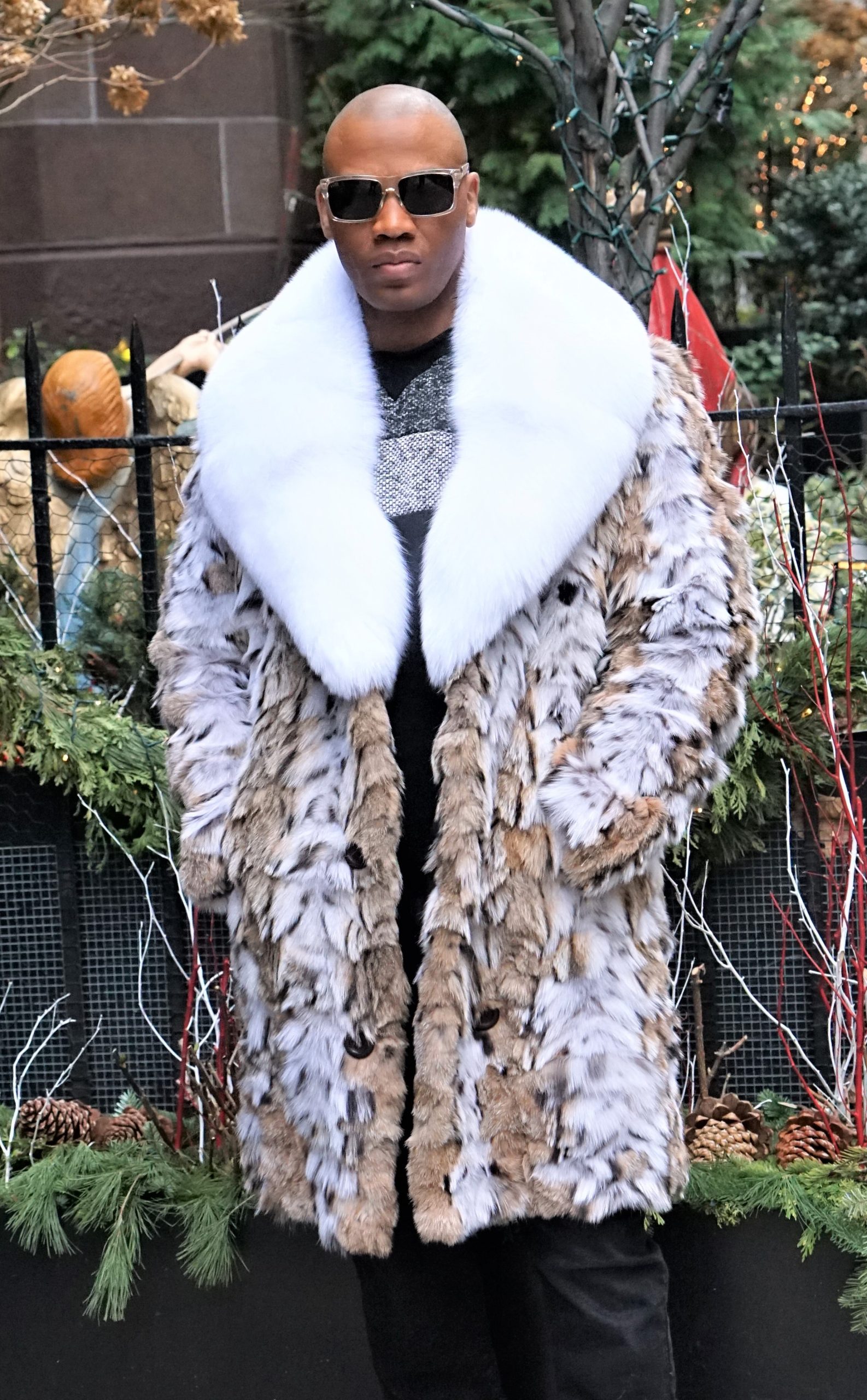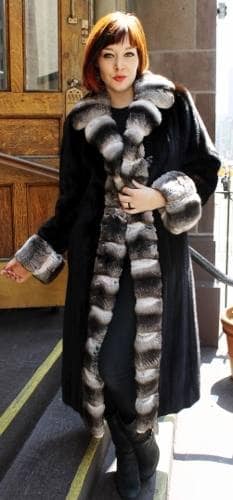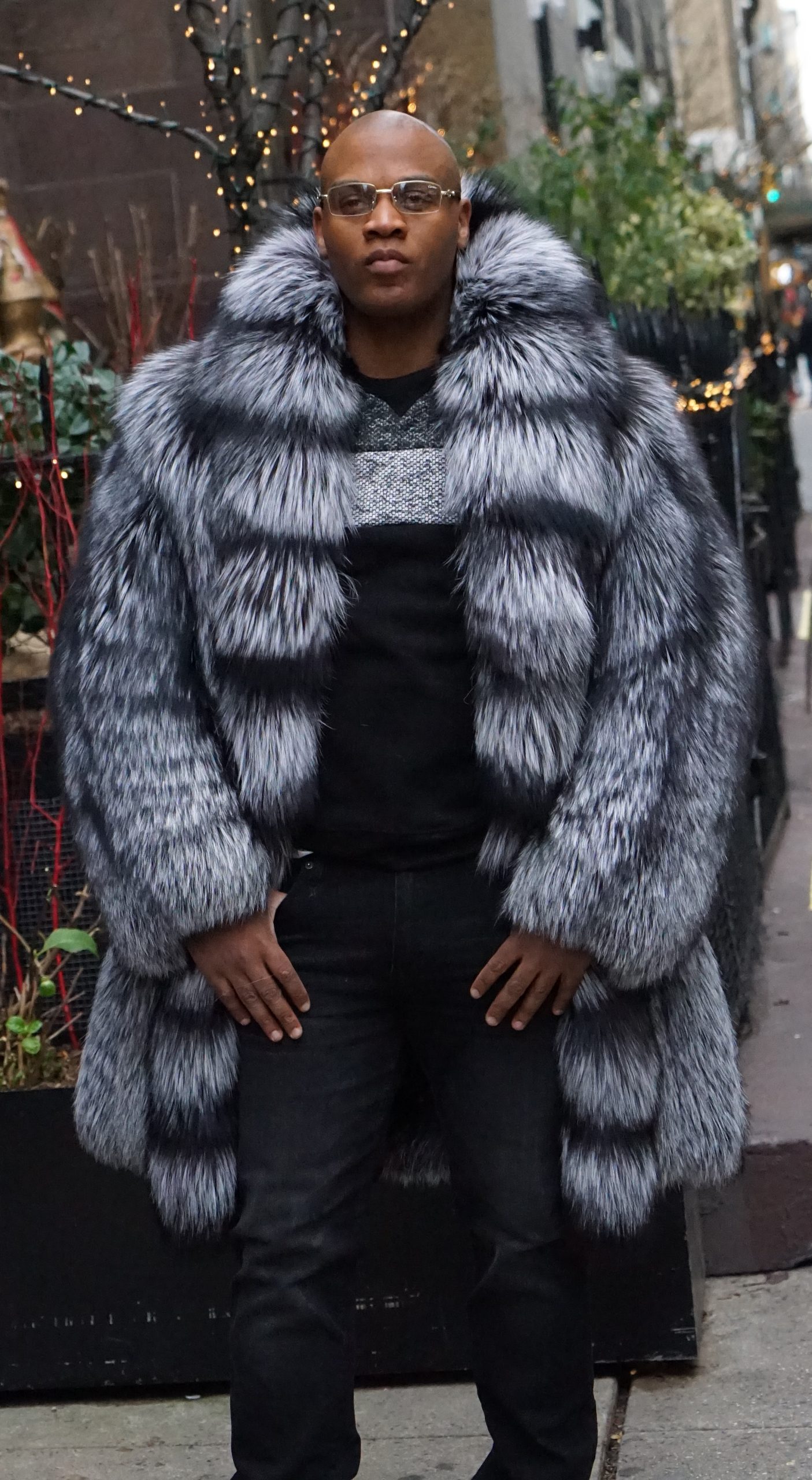
Fur Coats in Detroit

While fur coats in Detroit can provide warmth in colder climates like Detroit, Here are 100 reasons some individuals might choose to wear a fur coat in Detroit, keeping in mind that personal preferences vary:
- Exceptional warmth during Detroit’s cold winters.
- Protection against freezing temperatures and strong winds.
- Classic and timeless style.
- Durability, as high-quality fur coats can last for many years.
- A sense of elegance and sophistication.
- Status symbol, denoting wealth and luxury.
- Comfort and coziness.
- Historical fashion tradition in cold climates.
- Practicality for surviving extreme cold.
- Enhanced insulation compared to synthetic materials.
- Natural insulating properties of fur.
- Soft and tactile texture.

Horizontal Chinchilla Coat - Unique fashion choice that stands out.
- Vintage charm and appeal.
- Remembrance of past generations.
- Resistance to frost and moisture.
- Ability to layer underneath for added warmth.
- Iconic fashion choice for Detroit’s elite.
- Classic Hollywood glamour associated with fur.
- Support for traditional craftsmanship.
- Natural, biodegradable material.
- Customizable fur options to suit personal style.
- Variety of fur types and colors to choose from.
- Red carpet-worthy fashion for special occasions.
- Investment in a long-lasting wardrobe piece.
- Ability to dress up or down with different outfits.
- A symbol of opulence and extravagance.
- Timeless investment that retains value.
- Versatility in styling options.
- Sensual and soft to the touch.
- Ethereal elegance that fur can add to an outfit.
- Symbol of social status and success.
- Resistance to wear and tear.
- The craftsmanship involved in fur production.
- Ability to create unique and eye-catching looks.
- Confidence boost when wearing luxurious fur.
- Effortless way to make a fashion statement.
- Allure and attention-grabbing quality.
- Contribution to the local fur industry.
- Warmth without the bulk of heavy winter clothing.
- Ability to withstand Detroit’s extreme weather.
- Support for traditional furriers and artisans.
- Soft colors that are pleasing to the eye.

Designer Lavender Mink Coat - A sense of indulgence and pampering.
- Environmental adaptability in varying conditions.
- Soft caress of fur against the skin.
- Ability to make a memorable fashion statement.
- Reduces the need for layering multiple garments.
- Opportunity to express personal style.
- Ethical and sustainable fur sourcing practices.
- Exceptional craftsmanship that goes into fur coats.
- Opportunity to support fur trade regulations.
- Tradition of fur fashion in cold climates.
- The luxurious feel of fur against the body.
- Association with luxury brands and designers.
- Unique textures and patterns in fur.
- Support for fur conservation and responsible sourcing.
- Elevated appearance in the workplace.
- Ability to stay warm without compromising style.
- Practicality for outdoor winter activities.
- Symbolism of prestige and exclusivity.
- Historic charm and cultural significance.
- Unique and exotic fur types.
- Soft and lustrous fur qualities.

Sexy Horizontal Red Fox Vest - Ability to create a regal and majestic look.
- Sensual movement and gracefulness of fur.
- Contribution to sustainable fur farming practices.
- High-quality fur as an investment.
- Opportunities to mix and match fur accessories.
- The tactile pleasure of touching fur.
- Stylish addition to your winter wardrobe.
- Association with iconic fashion moments.
- Ability to choose from various fur treatments.
- Classic silhouette enhancement with fur.
- Pride in wearing a time-honored material.
- Opportunity to support ethical fur brands.
- A classic and enduring choice for Detroit winters.
- Natural beauty and texture of fur.
- Glamorous fashion option for the Motor City.
- Ability to celebrate the artistry of fur fashion.
- Reduces the need for heavy layering.

Canadian Lynx Stroller - Time-honored tradition of fur craftsmanship.
- Environmental adaptability in varying temperatures.
- Soft and silky textures.
- Opportunity to embrace Detroit’s winter fashion scene.
- Ability to create a warm and stylish look.
- Resistance to harsh winter conditions.
- Celebrates the beauty of animals in nature.
- Association with luxury events and galas.
- Ability to support ethical fur farming.
- A classic choice for formal events.
- Soft and supple fur textures.
- Dramatic flair that fur can add to an outfit.
- Proud representation of the fur industry.
- Opportunity to choose from ethically raised animals.
- Unique fur accessories like hats and scarves.
- Ability to invest in a family heirloom.
- Contribution to sustainable fur farming.
- Opportunity to make a fashion statement.
- Confidence boost when wearing fur in Detroit’s chilly winters.
Fur Coats in Detroit

It’s important to note that while fur coats in Detroit may provide warmth and have been a part of fashion traditions in cold climates, they have also been the subject of ethical and environmental debates, leading some individuals to opt for alternative materials like faux fur. Fashion choices should consider these factors and personal values.
A day for a woman in Detroit wearing her mink coat would vary depending on her personal preferences, activities, and the specific occasion. Here’s a fictional representation of what a day might look like for someone wearing a mink coat during the colder months in Detroit:
Morning:
- Wake Up: The woman begins her day by waking up to a chilly Detroit morning.
- Dressing: After a warm shower, she selects a chic outfit to complement her mink coat. Her ensemble includes a knee-length brown mink coat, a cashmere turtleneck sweater, fitted slacks, and knee-high leather boots.
- Breakfast: She enjoys a hot breakfast with her family, sipping on tea and having a hearty meal to start her day.
- Weather Check: She checks the weather forecast, which indicates cold temperatures and the possibility of snow, reinforcing her decision to wear her mink coat. ate Morning: 5. Leaving Home: She wraps herself in her mink coat, fastening the buttons and draping a matching scarf around her neck for added warmth. Before heading out, she slips on leather gloves and grabs her designer handbag.
- Errands: Her morning may include running errands, such as grocery shopping, visiting the local farmers’ market, and picking up dry cleaning.
- Coffee Break: While running errands, she takes a coffee break at a cozy café, savoring a cappuccino and a pastry.

Afternoon: 8. Lunch Meeting: She meets a colleague for a business lunch at a downtown restaurant. Her mink coat adds a touch of elegance to her professional attire.
- Shopping: After the lunch meeting, she indulges in some retail therapy at Detroit’s upscale boutiques, exploring the latest fashion trends and accessories.
- Cultural Activities: In the afternoon, she might attend a museum exhibition, art gallery, or explore Detroit’s cultural scene.
Evening: 11. Dinner Reservation: She has a dinner reservation at a trendy restaurant in the city with friends. Her mink coat is a stylish choice for a night out.
- Entertainment: After dinner, she and her friends decide to attend a concert or a live performance in Detroit, enjoying the city’s vibrant cultural offerings.
- Return Home: Upon returning home, she carefully hangs her mink coat in her closet, reflecting on a day filled with warmth, style, and cultural exploration in Detroit.
This fictional day for a woman in Detroit wearing her mink coat highlights how such a garment can provide both practical warmth and timeless style, making it a suitable choice for a busy day in a cold climate. However, it’s essential to consider ethical and environmental factors when making fashion choices involving fur, as fur coats have been the subject of debate and changing consumer preferences in recent years.
The history of fur trading and fur use in Detroit, like much of North America, is intertwined with indigenous peoples, European explorers, settlers, and the fur trade. Here is an overview of the history of furs in Detroit:

- Indigenous Peoples: The region now known as Detroit was inhabited by various indigenous tribes, including the Potawatomi, Ojibwa, and Huron, who had a long history of trapping and using furs for clothing, trade, and cultural purposes.
- French Exploration: French explorers, including Antoine Laumet de La Mothe, sieur de Cadillac, established Fort Pontchartrain du Détroit in 1701, marking the beginning of European settlement in the area. The French traded with indigenous peoples for fur pelts, particularly beaver, which were highly sought after for hat production.
- Fur Trading Posts: Detroit, strategically located at the confluence of the Detroit River and Lake St. Clair, became a vital fur trading post. French and later British traders established posts in the area to conduct the fur trade.
- British Control: After the British acquired Detroit in 1760, they continued to engage in the fur trade with indigenous tribes. British fur trading companies, such as the North West Company and the Hudson’s Bay Company, established a presence in the region.
- American Fur Trade: Following the American Revolution and the United States’ acquisition of Detroit, American fur traders expanded their activities in the area. The fur trade became a significant economic driver for the region.
- Fur-Bearing Animals: The Detroit area was rich in fur-bearing animals, including beaver, mink, otter, and muskrat. These animals were trapped and their pelts traded by both indigenous peoples and European settlers.
- Transition to Agriculture: As Detroit and the surrounding region developed, there was a shift from a fur-based economy to one based on agriculture. The fertile soil of the region attracted settlers who established farms.
- Decline of Fur Trade: The fur trade in Detroit declined in the 19th century due to overtrapping, changes in fashion, and the depletion of fur-bearing animal populations.
- 19th Century: Detroit’s economy diversified, with the growth of industries such as manufacturing, shipping, and automobile production, leading to the city’s nickname, the “Motor City.”
- Urban Development: Detroit’s urban development and industrial growth in the 20th century overshadowed its fur trading history. The city became known for its automobile industry and Motown music scene.
- Contemporary Fur Industry: In contemporary times, the fur industry continues to exist in Detroit, with furriers and retailers offering fur products. However, the industry has evolved to address ethical and environmental concerns, with an increasing focus on sustainability and responsible sourcing.
While the fur trade played a significant role in Detroit’s early history, the city’s development in the 20th century as an industrial and cultural hub shifted the focus away from fur.
Fur Coats in Detroit
History of men wearing fur coats in Detroit

The history of men wearing fur coats in Detroit, like in many cold-weather regions, has been shaped by practical considerations, fashion trends, and cultural influences. Here is an overview of the history of men wearing fur coats in Detroit:
- Indigenous Peoples: Long before European settlers arrived, indigenous tribes in the Detroit region used fur from animals they trapped and hunted, such as beavers, for practical clothing to stay warm in the harsh winters.
- European Influence: When French and later British settlers established fur trading posts and forts in Detroit in the 18th century, they adopted indigenous fur garments, such as beaver-skin hats, mittens, and coats, to protect themselves from the cold.
- Fur Trade: Detroit was a significant hub in the fur trade, with fur traders, both European and indigenous, wearing fur clothing to stay warm while engaging in trapping and trading activities.
- Practicality: During the 18th and 19th centuries, fur coats and accessories were worn by men in Detroit and other cold climates primarily for their exceptional warmth and insulation properties.
- Frontier Fashion: In the early 19th century, fur coats became a symbol of rugged masculinity and were adopted by fur trappers, traders, and frontiersmen as part of their attire.
- Evolution of Fashion: As Detroit and the United States continued to grow and urbanize, fur coats transitioned from practical outerwear to a fashionable statement, with men wearing them as status symbols and signs of prosperity.
- 20th Century: In the early to mid-20th century, men’s fur coats, often made of furs like mink, fox, and beaver, became more widely available and popular among affluent individuals in Detroit, reflecting their social status and success.
- Mid-Century Glamour: Fur coats, including full-length fur overcoats and stoles, were seen as a symbol of luxury and opulence, especially during the golden age of Hollywood.
- Decline: The fur industry, including the market for men’s fur coats, faced challenges in the late 20th century and early 21st century. Changing fashion trends, ethical concerns, and environmental considerations led to a decline in fur’s popularity.
- Modern Era: In contemporary times, some men in Detroit continue to wear fur coats, but the industry has evolved to address ethical and environmental concerns. There is a growing emphasis on sustainable and responsible fur sourcing practices.
- Diversity of Fur Types: Men have a wide range of fur choices, including mink, fox, sable, chinchilla, and more. The choice often reflects personal style and fashion preferences.
- Ethical and Environmental Awareness: The fur industry has adapted to concerns related to animal welfare, leading to the development of fur farming practices that emphasize responsible and sustainable fur production.
- Customization: Men can have fur coats and accessories tailored to their preferences, with different fur types, colors, and styles to choose from.
The history of men wearing fur coats in Detroit reflects the changing dynamics of the fur industry, from its origins as practical winter wear to its status as a luxury fashion statement. Today, men who choose to wear fur coats often do so for the warmth, comfort, and style they provide.